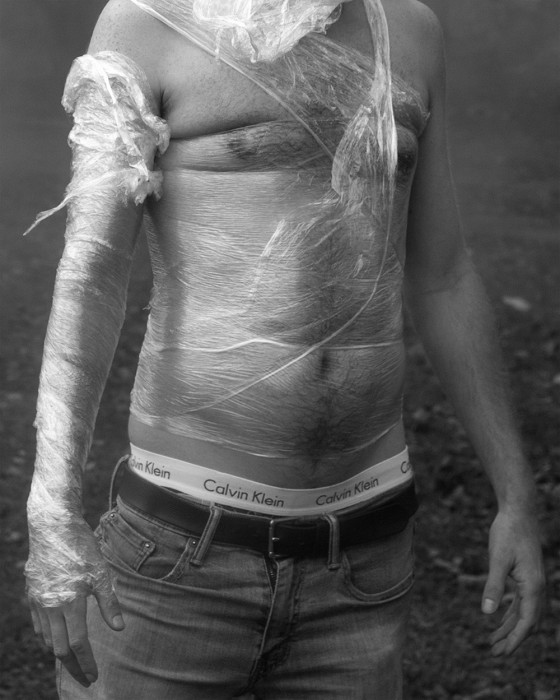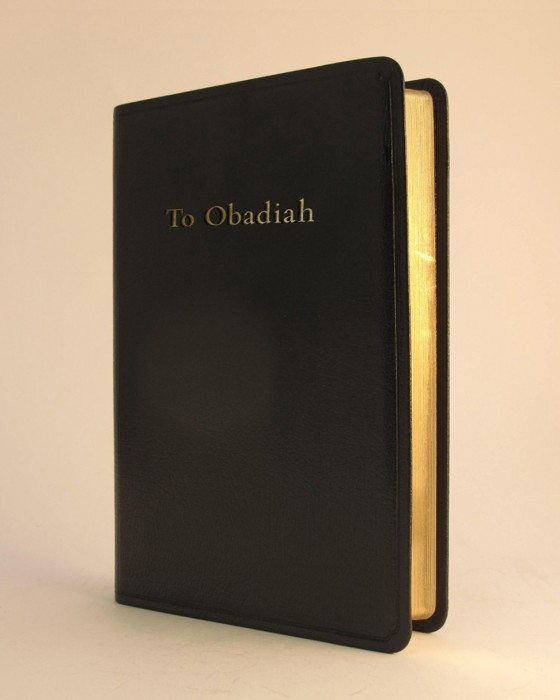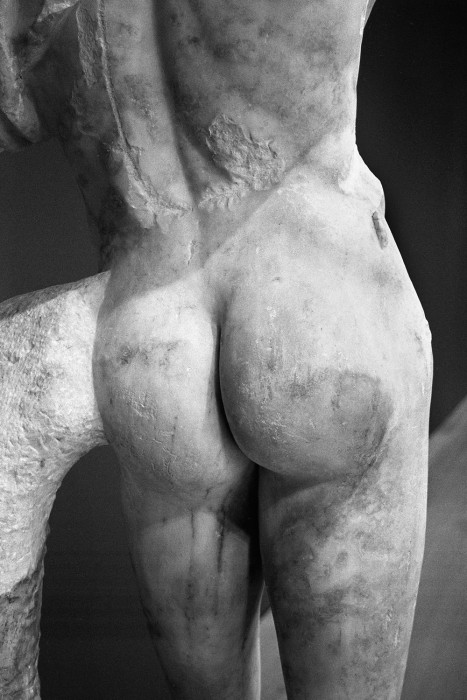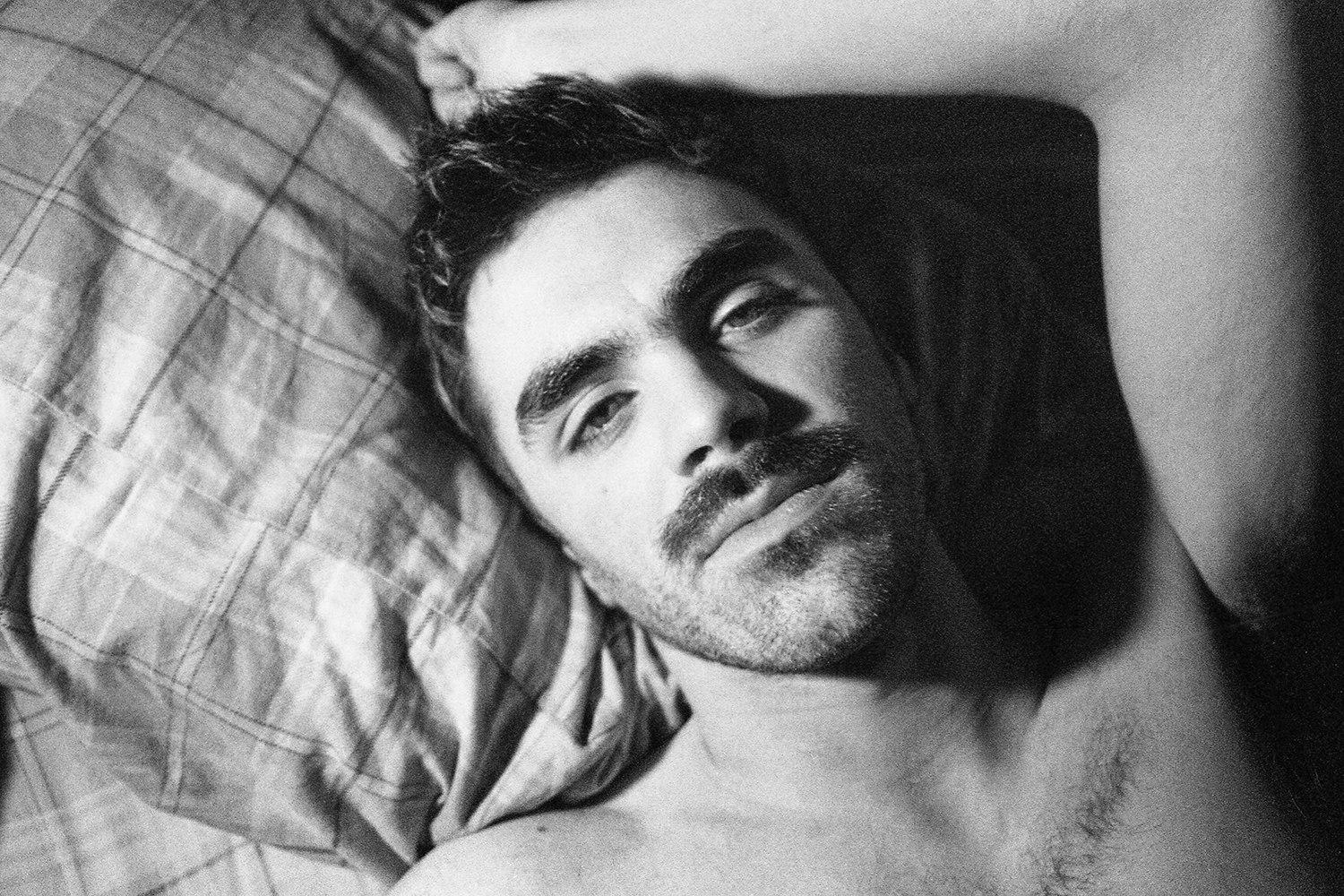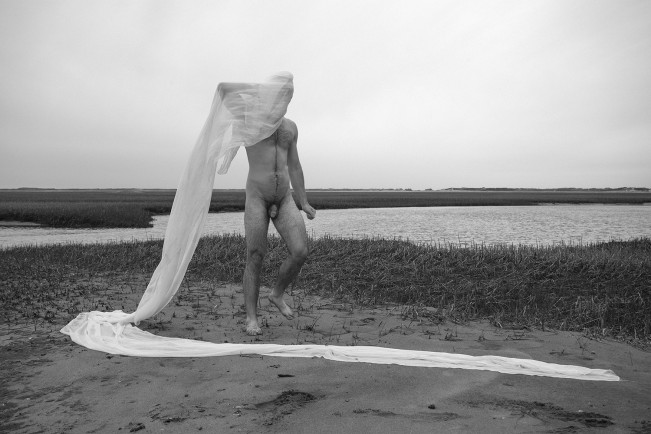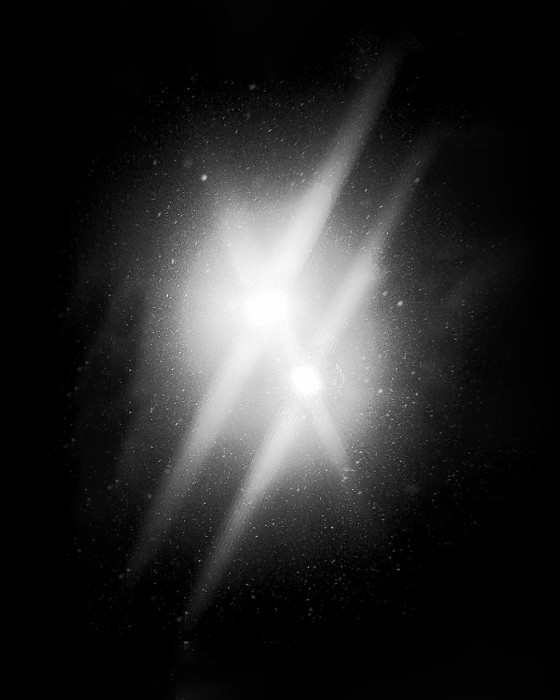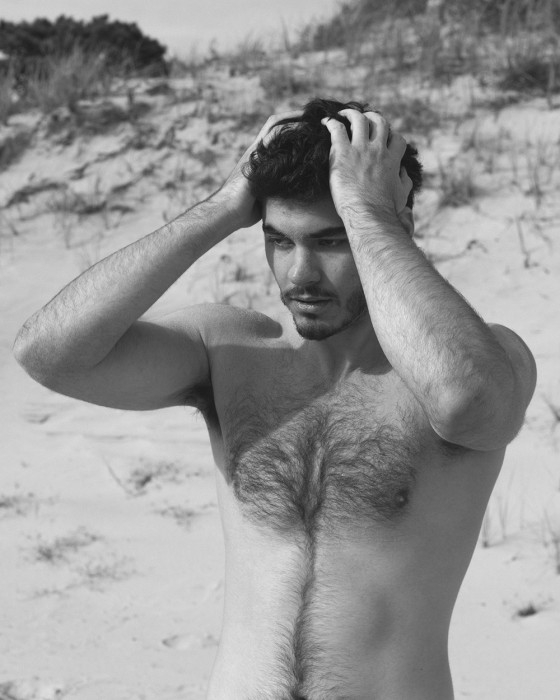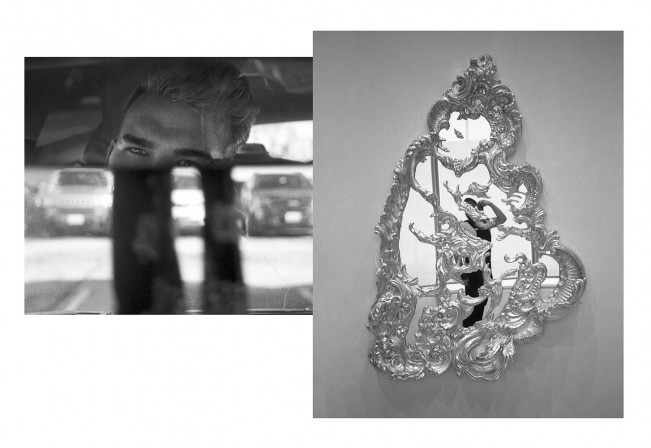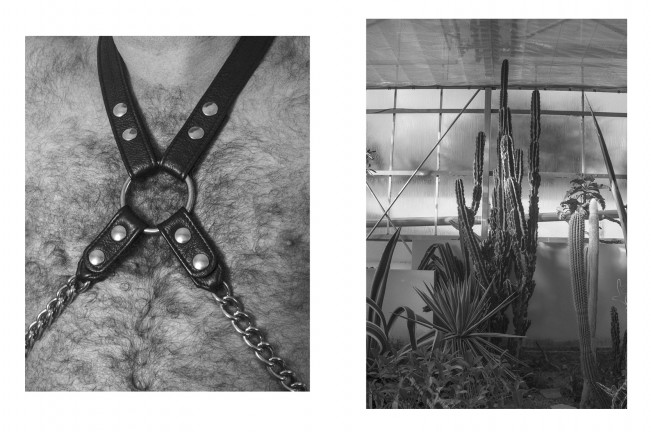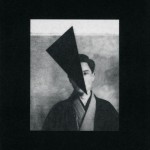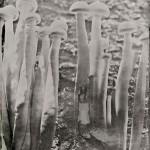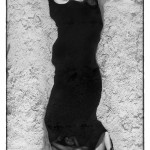Erick Jonathan Guzman: To Obadiah
This week, I am excited to introduce five new Lenscratch Content Editors who will be providing expanded perspectives on a variety of topics. Today we feature Brooklyn-based visual artist, Erick Guzman, who is a powerhouse presence pursing a wide variety of curatorial, community, and partnered projects that elevate and give exposure to photographers, particularly those of the BIPOC and Queer communities. His series, To Obadiah, is a personal consideration of self and of relationships that speaks to the complexity of knowing truly who we are. An interview with Erick follows.
Born in Downey, CA, Erick Jonathan Guzman is a graduate student at the Rhode Island School of Design, where they are pursuing an MFA in Photography. Due to COVID19, Guzman has decided to take a year or more away from their MFA studies to focus on their current projects based around philanthropy, diversity and inclusion, and curation. They graduated from Brown University in 2016 with two degrees: a BA in Visual Arts with Honors and a BA in Health & Human Biology. They are the recipient of the Rhode Island School of Design’s Graduate Commons Grant Fellowship and the Critical Mass MFA Scholarship presented by Photolucida, with their work currently on display at the Curated Fridge. Guzman is the founder of Vibrance Art Exchange, a collective of artists from around the US, who are committed to uplifting BIPOC, LGBTQIA+, and Womxn in Visual Art through exchange and philanthropy. Guzman is the Communications Manager of Dais Books, an independent publisher devoted to making artists’ books in small editions with commitment to raising the voices of artists who have traditionally been left on the periphery of the fine-art community by funding and hand producing a monograph of their work in direct collaboration with the artists themselves.
While at Brown, Guzman was awarded various scholarships, grants, and accolades for their commitment to interdisciplinary scholarship. They received the prestigious Karen T. Romer Undergraduate Teaching and Research Awards, where they worked with two faculty to create two undergraduate courses that still operate today. These courses “Artist and Scientist as Partners” and “Artists and Scientists: Theory Into Practice” focus on applying current research in neuroscience, education, narrative medicine, and best practices in the arts for persons with neurological disorders. Through site placements, students provide arts experiences (primarily dance and music) for persons with Parkinson’s Disease and Autism Spectrum Disorders. Accepted into the Program in Liberal Medical Education at eighteen, they went to medical school from 2016-2018, where Guzman was accepted into the Scholarly Concentration program in Medical Humanities for their project “4.4% Latino Physicians in the US”. Feeling inspired after this photography project, they ultimately decided to leave their medical studies to pursue their art practice.
Often subjects allegorically, Guzman’s work navigates the intricacies of identity politics to ask questions about their selfhood as a first-generation, Chicano, Queer, and GenderQueer person. Their work borrows from various visual traditions ranging from photographic and figurative portraiture, queer aesthetics, and the vernacular surrounding spirituality. Guzman is visually inspired by the materiality of Chicano and Queer culture and its expression, as seen through the body in private and public environments. Flowers, leather, bodily fluids, blemished skin, transparent fabrics, and hair are examples of visual material that Guzman identifies and heightens in their pictures. The work aims to research and explore liminal identity and the intersections between Queerness and Spirituality: mainly through the languages of desire, transcendence, love, and lust, which were tools used to colonize Latin America by the Catholic Church.
He/They/She (All Pronouns With Respect/Love) currently lives and works in Brooklyn, NY, with their demon cat, Walter Mercado. Guzman describes themselves as an “Iridescent Pink Jaguar”: passionate about intersectional identity studies, education, visibility, and community.
Instagram: ©erickg94
To Obadiah
This visual and written diary is a letter to Obadiah. You know who you are, you are reading this right now. You are Obadiah. They are Obadiah. I am, and I am not Obadiah.
I am for I say I am.
I am not for it is not a complete truth.
After hiding from myself for over twenty-one years, my life rapidly changed when I met Obadiah. It was through Obadiah; I began to learn more and more who/what/how/why I am.
I thought it would be easier to assimilate into a life of normalcy. This work and my queerness came bursting forth from me uncontrollably, and it bled into every facet of my existence after a dam of scabs began to tear.
This work scared me–it still scares me, but not for the reason it used to. It scared me before because I was trying to bury these feelings and thoughts for so long due to my own shame, it scares me now because I ever thought I needed to hide in order to survive.
I feel this book is a scream and a whisper all at once. I had archived and put away most of these images because I did not want to face them. It has radically changed my perception of self, my beliefs of what a photograph should/could be, and what Obadiah stands for.
The inception of the work was a reaction to a relationship, which in hindsight, was not what I had conflated it to be. It is analogous to my previous sense of self. These relationships stem from my interactions with others. For in finding the connection I craved after feeling so lost, I was able to see more of me. The downside, when Obadiah leaves, Obadiah tends to take part of me with them, so I must search again to pick-up where I left off, filling the puzzle, piece by piece.
I heard Obadiah sing in an oratorio by Felix Mendelssohn called “Elijah.” This oratorio depicts the life of the Prophet Elijah as told in the books 1 Kings and 2 Kings of the Old Testament. Hearing Obadiah sing was as if hearing an angel. In the oratorio, Obadiah warns Elijah of a threat to his life.
Obadiah: Man of God, now let my words be precious in thy sight. Thus saith Jezebel,
‘Elijah is worthy to die.’ So the mighty gather against thee, and they have prepared a net for thy steps; that they may seize thee, that they say slay thee. Arise then, and hasten for thy life, to the wilderness journey. The Lord, thy God, doth go with thee: He will not fail thee, He will not forsake thee. Now begone and bless me also!
Let this diary echo that warning to my past self.
I sometimes wish I were Elijah, but I am not. -Erick Guzman
Tell us about your growing up and how you came to Photography?
Hola Aline, Muchícimas Gracias, for this fantastic opportunity! I am incredibly honored and excited to be part of the Lenscratch Family!
I grew up in Ontario, CA, about forty-five minutes east of L.A. in the Inland Empire. The population is heavily Latinx (specifically Mexican), and I was raised by a single mother primarily as my father passed away when I was seven. My mother, Griselda Arredondo, always has instilled a sense of Chicanx pride in me, and she continually says to remember where “you” come from and never forget your roots or the people who help you reach your dreams. She has been a constant support system and inspiration to me, as she was able to raise my older brother, Jose, and me with the support of our extended family members. We lived in Section-8 housing growing up as we were low-income, and she was able to get a job at the leasing office where we lived by asking to use a copy machine. Since then, she has risen through the ranks and is now in a Director Position for Affordable Housing. I am incredibly grateful for my journey to Visual Art and, more specifically, Photography. My second parent came through books, movies, video games, television, theatre, and the internet because my mother worked so much. I have always been fascinated by the illusion, fantasy, and glamor that art can provide- and a big part of my research and practice involves bringing fiction or idea into reality. Watching movies like Selena, seeing Tyra yelling, “We were all rooting for you,” on America’s Next Top Model, escaping the world through books like the Chronicles of Narnia, to playing Charlie Brown in the musical You’re a Good Man, Charlie Brown in high school, I have constantly surrounded myself in the arts, and the world(s)–corporeal and fictional consistently inspire me. I was accepted into medical school at eighteen as part of Brown’s Program in Liberal Medical Education. This eight-year program allowed me to take courses outside of the traditional pre-med requirements as I accepted into medical school early. It allowed me to take my first formal visual arts course during my freshman year of college in the Spring of 2013, and I have since become obsessed and intrigued by all visual art as my primary
As a Content Editor for Lenscratch, what are you excited about bringing to the site?
As a Content Editor to Lenscratch, I am excited to bring all of my experience in visual art, non-profit work, medicine, and academia to create a sustainable and lasting impact through writing, resource expansion, and mentorship. I want to grow this platform to be even more inclusive and diverse than it is by elevating BIPOC, LGBTQIA+, and Womxn artists who are traditionally on the periphery of Photography and Academia. As a 1-st Generation, Latinx (Mexican y Guatemanteco), Queer, and GenderQueer artist, writer, philanthropist, and scholar, I am particularly interested in expanding and tearing down traditional stereotypes or boxes that BIPOC artists are tokenized by. I am interested in curating work that shows more breadth, variety, and is more nuanced than what we think of as conventional “Latin Art.” I wish to curate work that is as intersectional and complex as the artists I engage with, my culture, and myself as a person is. To be Latinx means so much more than just Chicanx/Mexican-American (which I am): it is Afro-Latinx, Asian-Latinx, Queer-Latinx, Disabled-Latinx, Womxn-Latinx. I strive to create space that allows for this plethora of voices to be uplifted and honored.
How important is writing to your practice?
Writing is a central force in my practice, as my work and writing are all research-based. When I write about my work, my contemporaries/ predecessors, or even an Instagram caption, I continually learn more about myself and my work. Writing allows me to condense, somewhat articulately, the myriad voices and thoughts in my brain that I have due to my ADHD. It allows for moments of clarity, which I can then use at a later point when discussing my work or engaging in conversations with other artists and academics. I only recently began to delve into poetry and prose, which has opened yet another creative output to articulate the work without unnecessary or pretentious jargon. As humans, we feel, think, create, destroy: writing poetry/prose allows for an intimate look into those emotions and thoughts through sequence and syntax.
Who and/or what inspires you?
As someone who was closeted for 22-years, my most formative queer experiences stem from hope and representation. When I see others reaching their dreams while authentically living as themselves, it gives me hope and determination that I, too, can find my success through self-love.
This freedom and love are fostered by:
- Strong, often Latinx, Womxn: my Mom, my Grandmothers, my Tías, my professors (Odette England, Sheida Soleimani, Theresa Ganz, etc.), my mentors (Aida Muluneh, Laura Aguilar, Julie Strandberg, Rachel Balaban, etc.), and amazing artists (Ana Mendieta, Martine Guitierrez, Zenele Muholi, Collier Schorr, etc.)
- Listening and watching Selena Quintanilla
- The first time I saw Valentina (a Latinx, GenderQueer, Drag Superstar) compete on RuPaul’s Drag Race – as I was coming out in 2017, watching them on that show gave me hope.
As Gloría Anzaldúa writes, Chicanx people continuously live on a border: mentally, physically, and emotionally. We are liminal beings, and as such, we much straddle multiple identities all at once – even more so if one is Queer or identifies under the trans umbrella. This in mind, I had grown up wishing to assimilate into the dominant culture, as I thought it was the only way to keep parts of myself hidden to survive. I remember seeing Selena Quintanilla multiple times growing up, and I always wanted to be Selena. She represented hope for me and my dreams—a Chicanx person reaching her goals. For the first time as a Queer individual, I saw that same magic when I saw Valentina. She represents everything I want to be, and I hope I can, in turn, become someone to inspire/aid others.
Your series, To Obadia, is a personal telling of self, memory, and gender. What do you want the reader/viewer to take away from this work?
Obadiah and Elijah are concepts of persons. I am Obadiah; you are Obadiah; the persons I interact with romantically are Obadiah. It is an intimate look into my life and world through the story of Elijah in 2 Kings. I identity not as a gay man, but as a Queer Person, so navigating my identity was extremely difficult for me, which led to being closeted for 22-ish years. The work needs to be digested multiple times by people to understand the complexities of relationships: with others, with events, with ourselves. It was an incredibly therapeutic experience for me personally, sifting through my archive and sequencing the images to the music of the oratorio with the audio coming from the person who had broken my heart. The experience of putting the work together made me realize that I am enough. You are enough. We are enough. Others’ affections do not determine our worth.
Was this originally conceived as a book project?
Not at all! The project was work that I had archived and put away as I was too scared to look at the images, or I thought the photos were “not my work.” I had put myself into a box of what I thought my photos should look like, and pictures of nature and flowers never were part of that narrative I had constructed for myself. It was not until I took a Photobook course with Steve Smith, that I realized my vast archive of images would be able to come together through sequence, content, narrative, and design. I started with a small 8-page zine with the prose I had written over my heartbreak, and from there, it grew and grew.
This is such a powerful line in your artist’s statement, can you expand on it?
“I feel this book is a scream and a whisper all at once. I had archived and put away most of these images because I did not want to face them. It has radically changed my perception of self, my beliefs of what a photograph should/could be, and what Obadiah stands for.”
My journey to understanding my sexual and gender identity was confusing. I was never entirely comfortable navigating straight or gay culture, and it wasn’t until I realized I did not have to “pick” that I found my true freedom and liberation. I was scared to be me, all parts of myself, which includes opening myself up to be vulnerable. As confident and joyful I come across to people, like everyone, I struggle with my insecurities and worth, and many of the photos I had taken overexposed myself. This vulnerability and emotion scared me, as I felt too much when I saw most of the images. The process of taking them out of the archive made me realize that I again needed to embrace all parts of myself. Even the parts that I think were too sad, vulnerable, or hurt. This uncomfortableness to feel these emotions I realized was byproducts of Machismo; as a Latinx person, society conditioned me to be as “manly” as possible, with infamous phrase “boys don’t cry” a constant reminder of that. Good thing I’m not a boy or a girl. I’m Erick. Again, thank you, Obadiah.
What’s next?
Well, I just moved to Brooklyn and paused on my Graduate Studies to focus on my philanthropic goals, curatorial practice, and research for my work. I have started an Art Collective, Vibrance Art Exchange (VAE), which is a program made by BIPOC, LGBTQIA+, and Womyn Artists, for them. To take back our agency and control our economy away from wealthy and powerful institutions and collectors, Vibrance Art Exchange aims to build an artist controlled art economy through the facilitation of community that would be cross-continental: eventually global. Diversity and Inclusion are at the FOREFRONT of this program; thus, the planning committee and board of directors include BIPOC, LGBTQIA+, and Womyn from across the U.S. We just finished our summer fundraiser art raffle, which raised money for nine different organizations. Extremely excited to start programming for VAE and begin the physical print art exchange. If people are interested in joining the collective, they should email vibranceartexchange@gmail.com and follow @vibranceartexchange on Instagram. I will also be curating a show soon for the Humble Arts Foundation, which I am incredibly excited for. I am making my NYC debut in the FOGO show by SoMadd Studios, curated by Efrem Zelony-Mindell, which will open in October!
How has Covid altered your practice? Did you make new work or try new things?
I work exceptionally well under pressure (thanks med school haha). When I am faced with uncertainty or danger, I go into survival mode and make things to find solutions to my woes. The risk and stress from COVID, coupled with the heightened awareness of the violence enacted on Black and Brown persons during this summer, led me to create and do a lot of work. I created this book, learned how to process my color film through C41 processing (1/10 the cost of sending it to a lab), created my art collective Vibrance Art Exchange, started my Design and Apparel Company Nasty Twink, became the communications manager at DAIS Books with Shawn Bush. Now I am writing and curating a lot of artwork. As someone who has been in extreme poverty and has been homeless as an adult, I never want to be in that position again. As long as I have a mouth to speak, a body to make, and a mind to think, I will work continuously to further my dreams. Like Selena, I am a dreamer, and as my Mom says, I never forget where I came from. This in mind, I will work just as hard to help elevate fellow BIPOC, LGBTQIA+ and Womxn to reach their dreams and goals together.
Favorite meal you made during Covid?
I learned how to cook from my Mom, so I cook a lot. I love to make mole from scratch, various salsas, Arroz y Frijoles Negros, and marinate and grill carne asada! I am in love with Asian food, so I made it a quarantine mission to upgrade my pantry with Asian ingredients so that I could make my favorite dishes like Thai Curry and Vietnamese Pho. I love to entertain, so if you ever want some quality cooking, come over sometime for some authentic Mexican food.
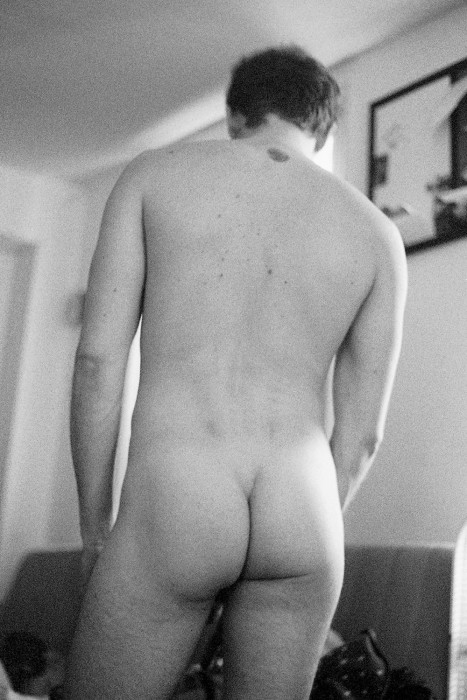
“The night Obadiah left, we watched television and ate dinner. Intermittent moments of affection between conversations laced with laughter I looked into his eyes and he in mine, and I kissed him a fleeting moment I believed to be more tender than was promised…an action that was repeated often previously. a connection we would never share again. Obadiah looked back at me. He said, “I think we should just be friends.” I asked Obadiah to get out of my apartment, never to see him again. Alone, I cried and wished I was Elijah To be swept away, to be carried off, for my spirit to be rescued from this pain. I am no Elijah, and Obadiah was not their names” ©Erick Guzman, To Obadiah
Finally, describe your perfect day—and don’t forget to tell us who is on the soundtrack!
“April 25th — because it’s not too hot, not too cold. All you need is a light jacket!” – Miss Rhode Island (Heather Burns) from Miss Congeniality.
Beginning: “All Eyes on Me” by Valentina,
Inciting Incident: “Boys” by Charlie XCX
Second Thoughts: “I’m In Control” by Aluna George
Act 1, Climax: “WAP” by Cardi B and Megan Stallion
Obstacle: “There Will Be Blood” by Kim Petras
Obstacle: “Como La Flor” & “Amor Prohibido” by Selena Quintanilla
Midpoint (big twist): “If I Were a Boy” by Beyoncé
Obstacle: “Let’s Stay Together” by Al Green
Disaster: “Point of No Return” by Exposé
Crisis: “Jerome” by Lizzo
The Climax of Act 2: “Learn To Let Go (Freenixpawl Remix)” by Kesha
The Climax of Act 3: “Así Fue” by Isabel Pantoja
Obstacle: “Stupid Love” by Lady Gaga
Denouement (wrap-up): “Somewhere Only We Know” by Keane + “The Boss” by Diana Ross
End: “Love Like You” from Steven Universe by Rebeca Sugar
Posts on Lenscratch may not be reproduced without the permission of the Lenscratch staff and the photographer.
Recommended
-
Salua Ares: Absense as FormNovember 29th, 2025
-
Ricardo Miguel Hernández: When the memory turns to dust and Beyond PainNovember 28th, 2025
-
Pamela Landau Connolly: Columbus DriveNovember 26th, 2025
-
KELIY ANDERSON-STALEY: Wilderness No longer at the Edge of ThingsNovember 19th, 2025
-
Jackie Mulder: Thought TrailsNovember 18th, 2025

